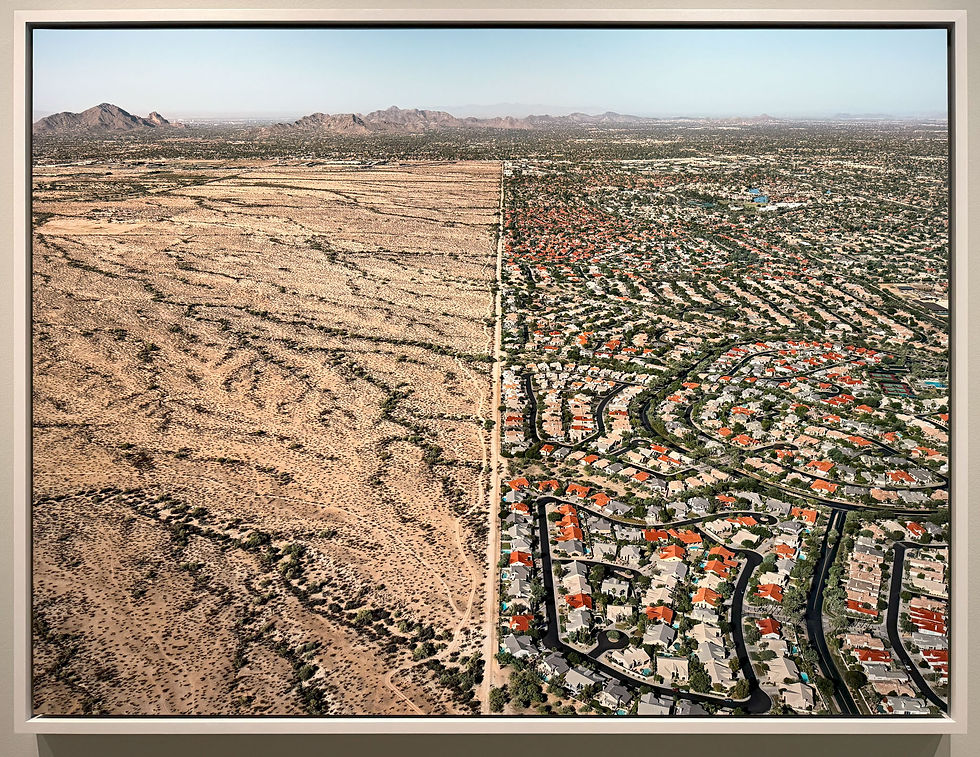Our trip in New York Part 1 of 2
- Diamond Zhou

- Aug 1
- 7 min read
welcome to our
SATURDAY EVENING POST
August 2nd, 2025
Arriving in New York is to step into a current that never slows. The city thrums with a vitality that seeps into everything , from its streets, its conversations, its art. Here, creativity is not contained; it spills from museum walls into the rhythm of daily life, from private collections into the public sphere. There is never a need to plan every moment, simply step outside, and the city offers itself, layer by layer, with something unexpected around every corner.
The art scene here is a living organism, vast and electric. Public institutions stand alongside private foundations turned museums; small galleries push forward fresh young talent while established spaces remind you of art’s deep continuum. Art is not simply displayed here, it is fostered, debated over, celebrated, and allowed to breathe. Choosing what to share has been an almost impossible task. There are countless exhibitions worth seeing, and narrowing our experience to a handful, transmitting through a series of photos, has felt like leaving too many stories untold.
For at least trying, we are breaking our trip from New York to Pennsylvania into two Saturday Evening Posts. This week, we share a few exhibition highlights, exhibitions seen either with the guidance and companionship of our dear friend Allen Kolkowitz, or simply serendipitous encounters. Next week, we will turn to the true highlights of our East Coast trip: our visit to the extraordinary Edward Burtynsky exhibition at the ICP, an intimate afternoon at Robert Kelly’s studio and home, and the unforgettable time we spent with Robert and Cintra Murray and family in Pennsylvania. Each moment deserves its own space to unfold, and we can’t wait to share them with you.
MoMA
At the Museum of Modern Art in New York, the main lobby is currently transformed by Odili Donald Odita’s sweeping mural commission, Songs from Life, his largest to date, on view through spring 2026. The installation wraps the entire lobby in vertical and diagonal fields of colour, over 192 tones mixed to harmonize into shifting geometric patterns across walls and columns. Drawing on African textile traditions, Western abstraction, and a curated playlist of global artists including Led Zeppelin, Marvin Gaye, Fela Kuti, Michael Jackson, and Aretha Franklin, Odita positions the mural as a social and visual gathering space, one that welcomes diversity through rhythm, hue, and communal presence.


Otobong Nkanga: Cadence (on view from October 10, 2024 to July 27, 2025) transforms the Marron Family Atrium into an immersive ecosystem of tapestry, sculpture, sound, and text. Nkanga, a Nigerian Belgian artist born in 1974, has created a monumental woven tapestry that cascades along the atrium walls, paired with sculptural forms of dyed rope, hand-blown glass, and ceramics. Interspersed among these elements are poetic tablets inscribed in her own handwriting, while a soundscape of breathwork and voice envelops the space. The installation unfolds like a meditation on ecological cycles, resource extraction, and resilience, moving from subterranean decay to cosmic light. It is a work of extraordinary ambition and beauty, inviting visitors into an experience that is both sensory and contemplative, urging a deeper empathy with the natural world and with one another.
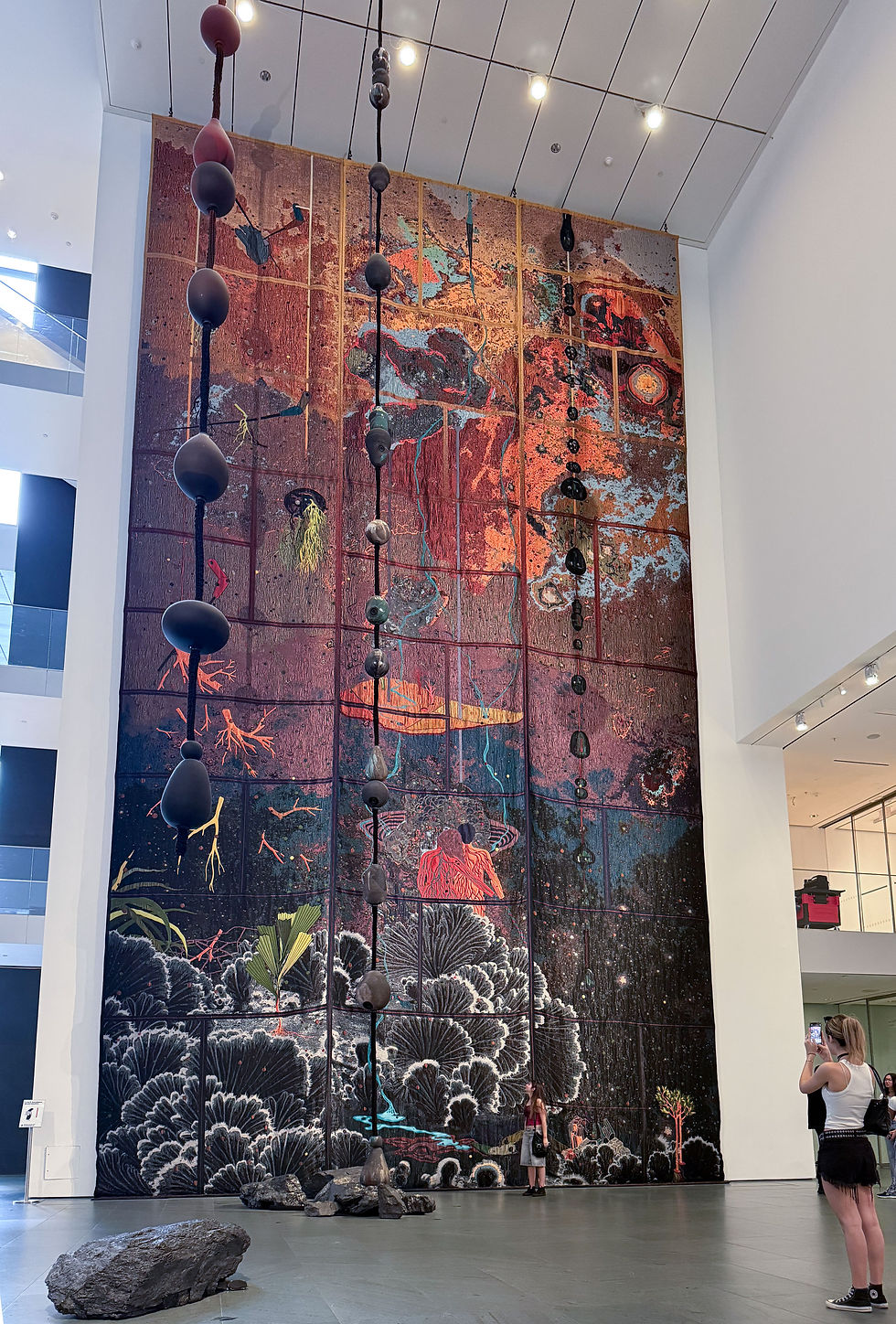
Hilma af Klint: What Stands Behind the Flowers (through September 27, 2025) reveals a luminous series of botanical watercolours made between 1919 and 1920. These works, newly acquired by MoMA, depict wildflowers and edible plants with both scientific precision and spiritual symbolism, each bloom interlaced with af Klint’s mysterious geometric signs. Curated in collaboration with botanist Lena Struwe, the exhibition invites close, almost meditative looking, reminding us how af Klint perceived nature as a bridge between the material and the spiritual.




Jack Whitten: The Messenger (on view until August 2, 2025) is the first full retrospective of this groundbreaking African American artist. Whitten’s restless experimentation, raking layers of acrylic with his custom “developer” tool and embedding ash, blood, copper, and unexpected materials into tessellated forms, maps a deeply personal journey that bridges abstraction and memory, ideology and emotion. Influenced by jazz, civil rights, technology, and African ritual art, his works carry both intimate narratives and cultural resonance.

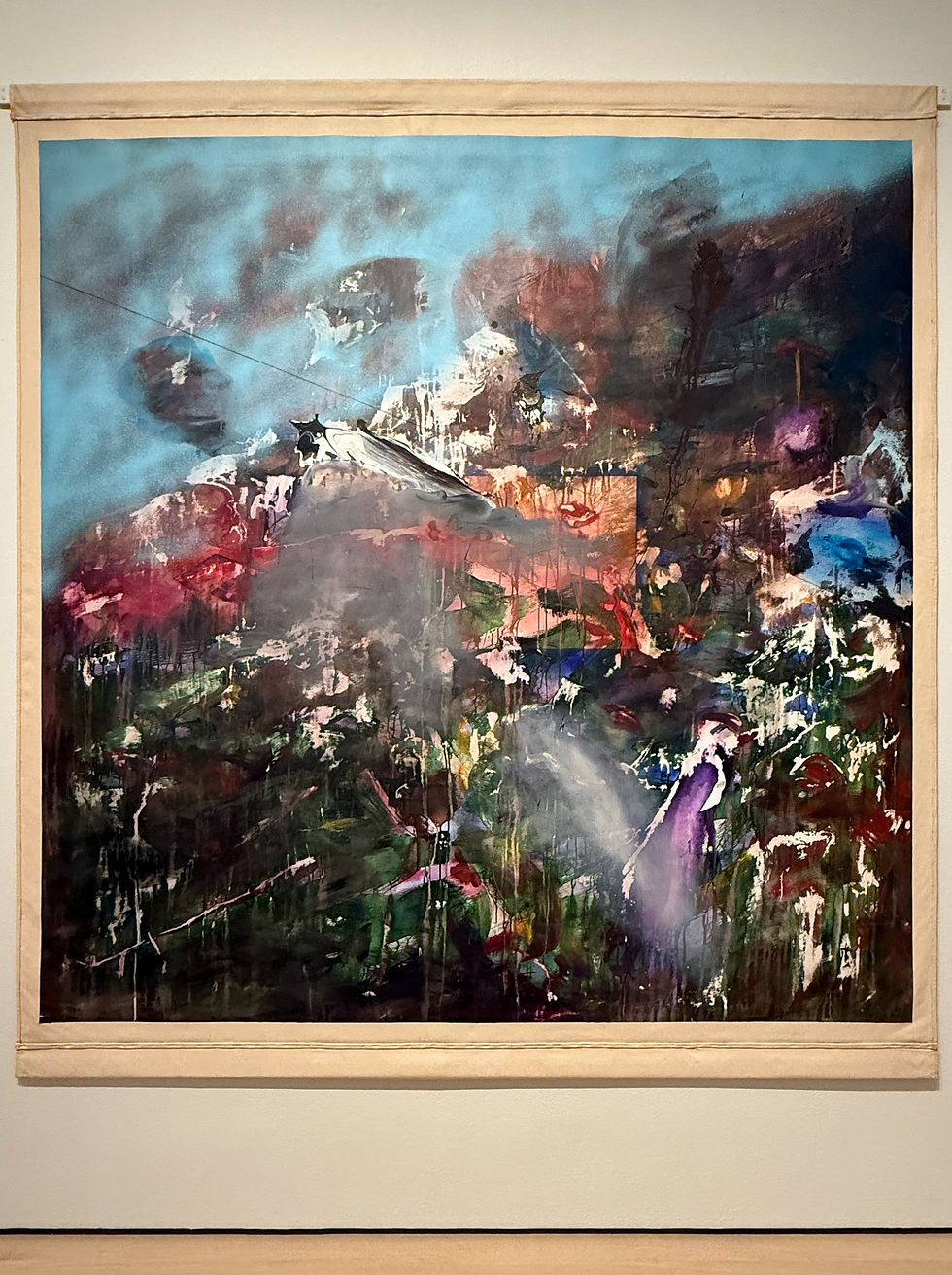



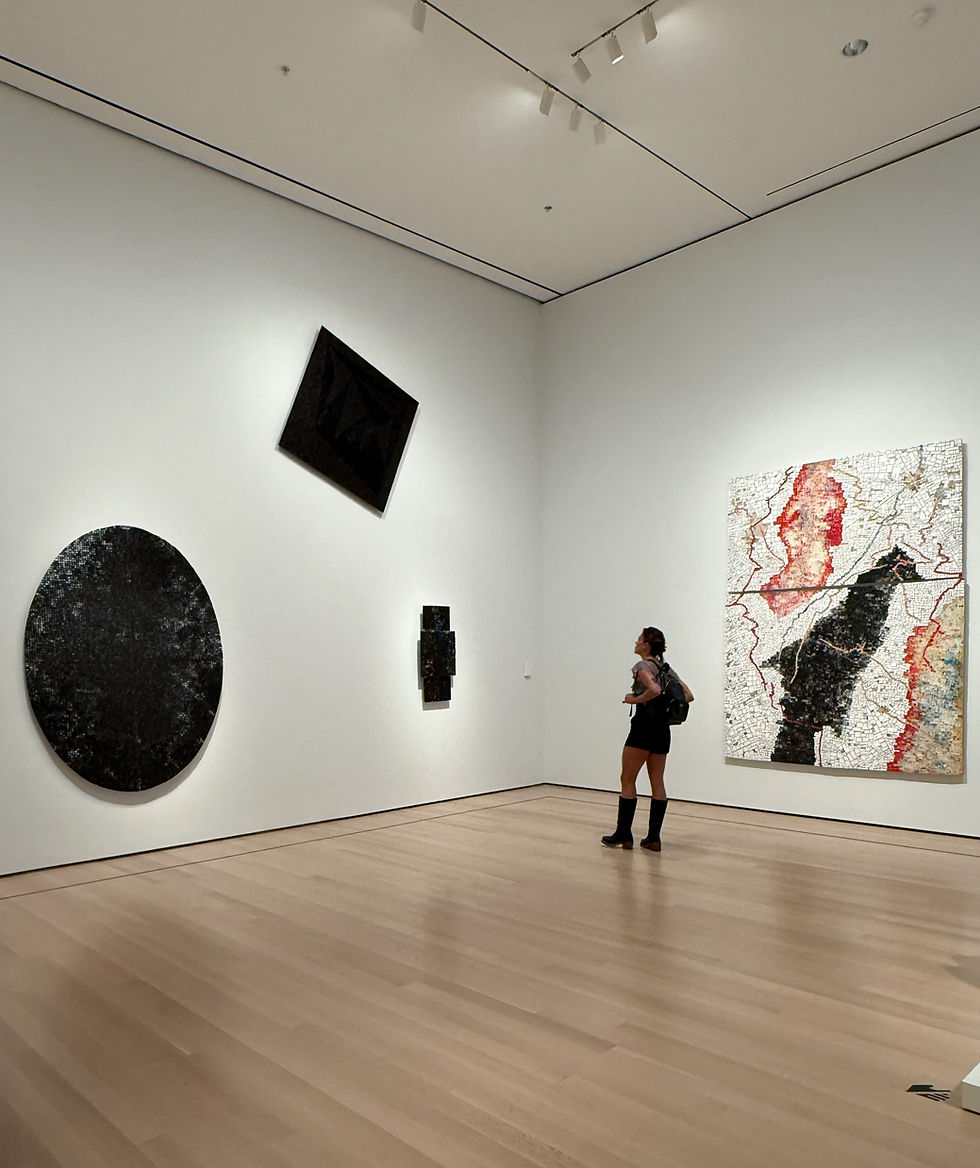


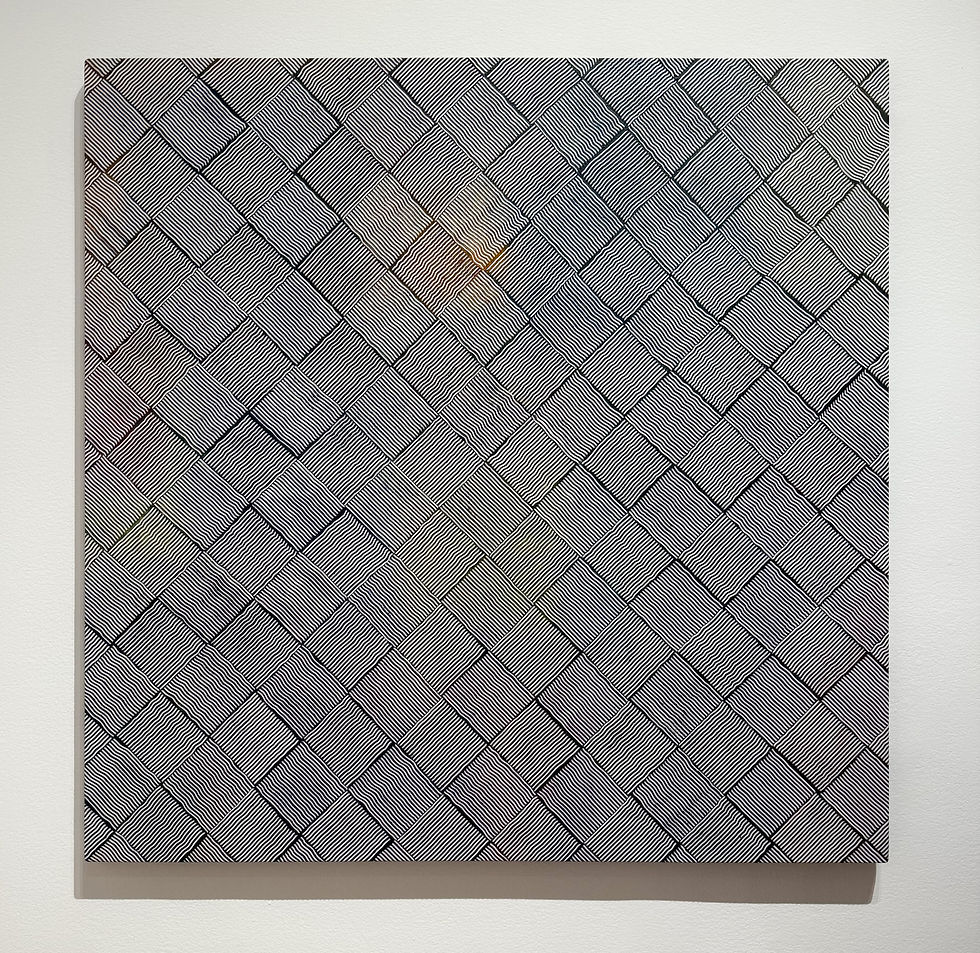
Other incredible works at the MoMA.





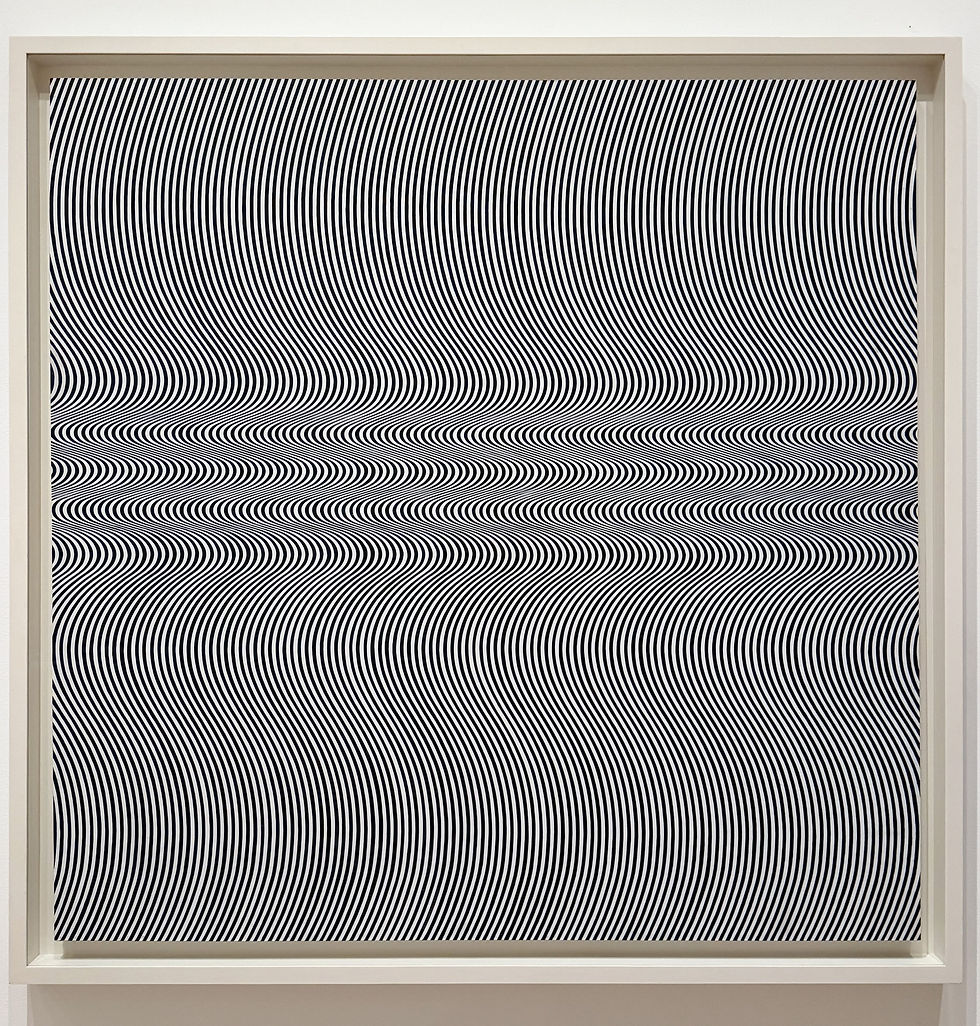

Yares Art Gallery
At Yares Art Gallery, Fields of Color IV presents a masterful survey of Color Field painting, showcasing major works by luminaries such as Morris Louis, Kenneth Noland, Jules Olitski, and Helen Helen Frankenthaler. Alongside it, Larry Poons: Provocation, Iliad: Powers + Spells offers a focused presentation on Poons’s dense, energetic canvases. This exhibition highlights a selection of his most expressive works, large scale, rhythmically structured paintings that amplify his signature optical vibrancy.
We were very delighted to have met up with Karen Wilkin, the respected curator and critic known for her authoritative voice on 20th century modernism, and was very kindly introduced to Kenneth Brummel, Curator of International Art at Auckalnd Art Gallery Toi o Tāmaki, while they were discussing Larry Poons work together in the gallery.





The Met
At the Metropolitan Museum of Art, the exhibition Sargent and Paris (on view through August 3, 2025) traces John Singer Sargent’s transformative decade in Paris from 1874 to the mid-1880s, showcasing works from preparatory studies to iconic portraits. The culmination of the show is the masterful Madame X (1884), whose elegant, pale figure and subtly provocative pose once scandalized the Paris Salon and now stands as a monument to Sargent’s daring blend of sensual refinement and psychological acuity.
Throughout the galleries, Sargent’s early experimentation of portraits, landscapes, genre scenes reveal an artist mastering technique and emotional subtlety. His brushwork conveys a sensual elegance, whether in the soft glow of fabrics, the luminous flesh tones of portrait sitters, or the rhythmic energy of Parisian settings. This exhibition highlights his ability to balance opulent surface with interior life, creating paintings that feel both beautifully rendered and quietly alive.






Pace Gallery
At Pace Gallery in New York, Robert Mangold: Pentagons and Folded Space presents a refined series of paintings and works on paper from 2022 to 2024 that explore the quiet drama of form, line, and color. Using five-sided canvases, Mangold introduces gentle shifts in surface and proportion, dividing each shape with his signature graphite lines. The palette of soft ochres, maroons, and muted greens feels both architectural and meditative. In the gallery’s light-filled space, these works invite close, contemplative looking, offering a restrained but deeply resonant language of abstraction.




Alicja Kwade: Telos Tales (through August 15, 2025) presents the artist’s first solo exhibition with the gallery, exploring themes of time, causality, and perception. The central works are suspend cast bronze tree branches within geometric steel frames, punctuated by mirrored clock faces that fracture and multiply reflections. These works draw on Aristotle’s theories of causation, merging natural forms with industrial precision. In Pace’s expansive Chelsea space, these installations create a meditative space that allows us to examine how we experience and construct the passage of time.



Hauser & Wirth
A Natural History of the Studio (May 1–August 1, 2025) offers a significant, two-gallery exhibition of William Kentridge’s immersive new project. Presented at both their 22nd Street and 18th Street locations, the show features the complete nine-part film series Self‑Portrait as a Coffee‑Pot, alongside more than seventy preparatory charcoal drawings and a selection of intimate prints and bronze sculptures. Kentridge recreates his Johannesburg studio as spatial architecture, turning process into performance and drawing into dynamic gesture—revealing an artist who mines memory, identity, and political history with theatrical wit and poetic gravity.




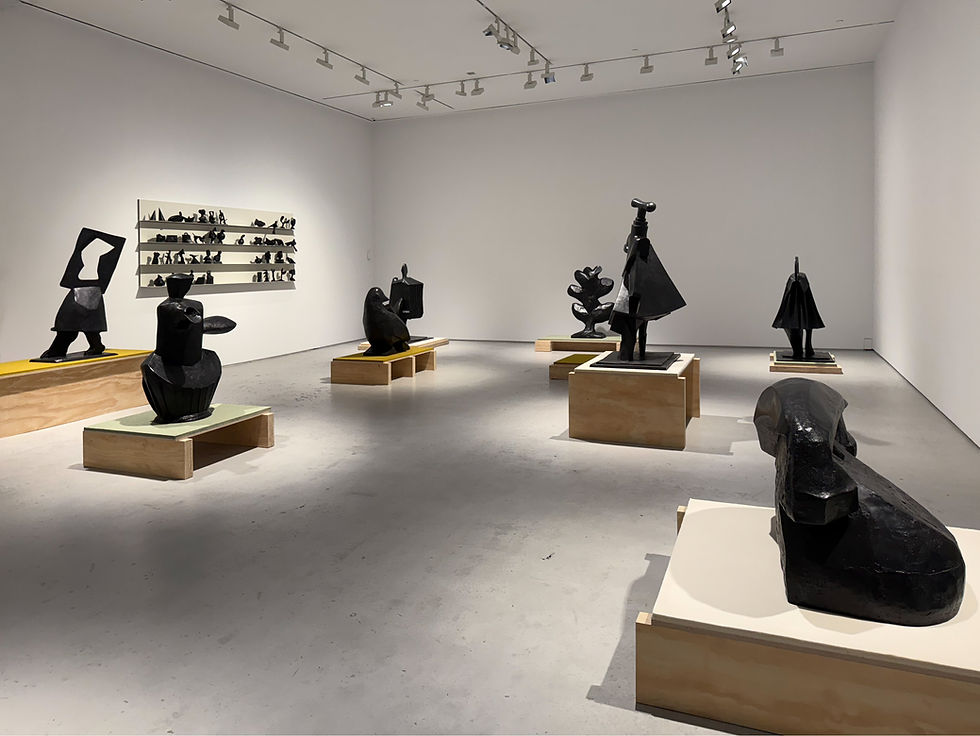
Francis Picabia: Éternel recommencement (Eternal Beginning) (through August 1, 2025) focuses on the artist’s final years, presenting more than twenty paintings created between 1945 and 1952. These late works reveal Picabia’s continual reinvention, moving beyond his earlier Dada and figurative phases into a personal abstraction marked by layered textures, unexpected color harmonies, and recurring motifs transformed through repetition. Seen together, they capture an artist who refused to settle, whose paintings pulse with both immediacy and reflection, turning the idea of an “end” into a continual beginning.



Mnuchin Gallery





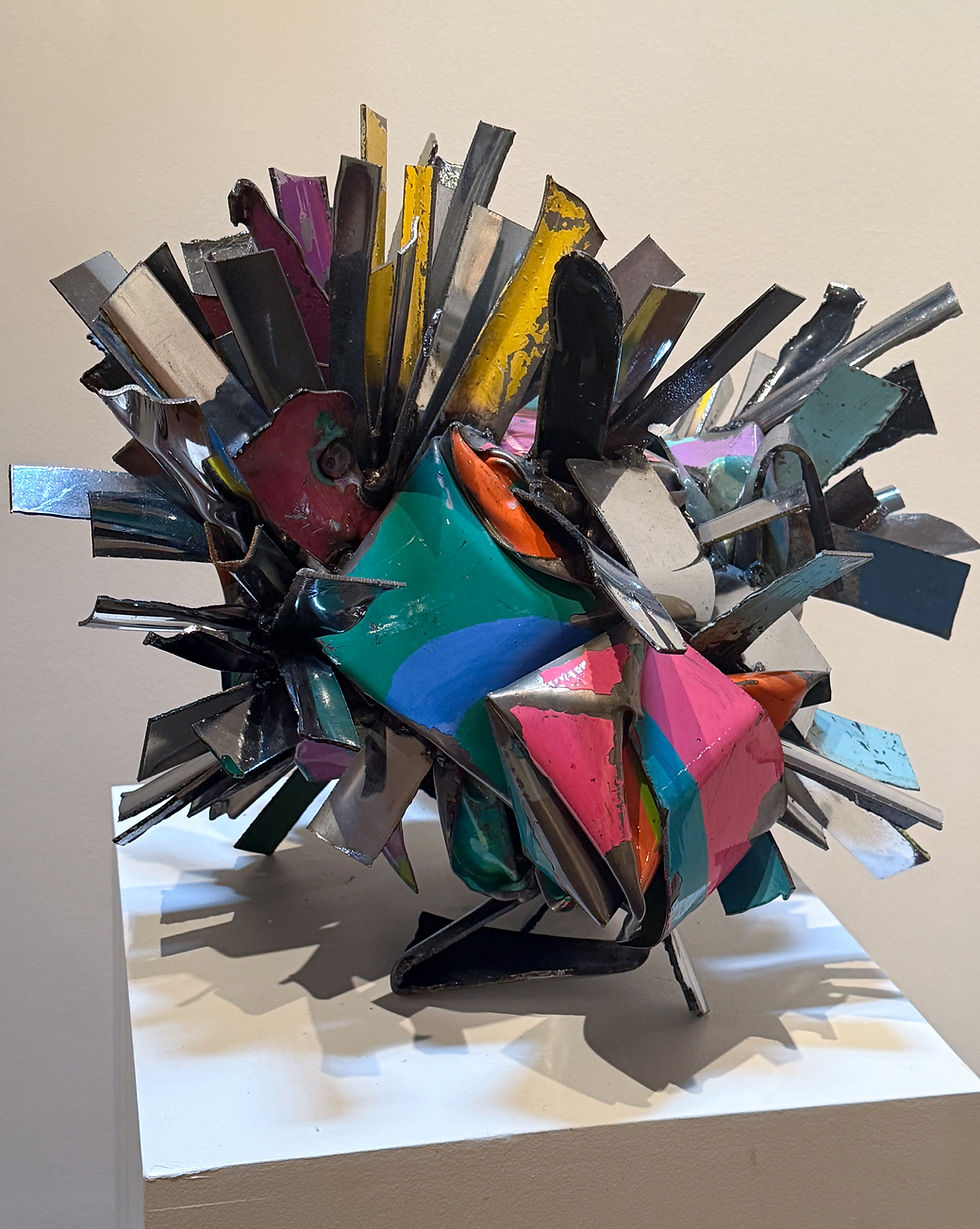
Subway Portraits
At the 86th Street station of the Second Avenue subway, Chuck Close’s "Subway Portraits" (2017) comprises twelve nine-foot-tall mosaic portraits of cultural figures—Philip Glass, Lou Reed, Cindy Sherman, Kara Walker, Cecily Brown, Alex Katz, Zhang Huan, Sienna Shields among them, plus two self-portraits. Rendered in ceramic tile and glass, these monumental mosaics honor New York’s diversity and artistic identity, translating Close’s photorealist painting style into durable, public art. Commissioned by MTA Arts & Design.





Neue Galerie New York
Neue Galerie New York, located at 1048 Fifth Avenue at 86th Street, is a museum devoted to early 20th‑century German and Austrian art and design. Housed in the restored William Starr Miller Beaux‑Arts mansion, reimagined by Annabelle Selldorf, this six‑story landmark opened in 2001 through the vision of art dealer Serge Sabarsky and philanthropist Ronald S. Lauder. Its collection offers a rare depth of Expressionist painting (Klimt, Kokoschka, Schiele), Vienna Secession decorative arts, and masterworks of the Wiener Werkstätte—all curated to enrich American understanding of this pivotal cultural moment. The museum also houses Café Sabarsky and a fine arts bookstore dedicated to Germanic and Austrian modernism.
At the heart of the museum is Gustav Klimt’s Portrait of Adele Bloch‑Bauer I (1907), known universally as The Woman in Gold, on permanent view in the Klimt Gallery. This iconic painting represents the pinnacle of Klimt’s golden phase with its shimmering gold and silver leaf surface, intricate ornamentation, and symbolic motifs drawn from Byzantine mosaic forms. The sitter, Adele Bloch‑Bauer, is rendered in near‑ethereal fashion, her delicate and fair face and hands harmonically balanced against dense geometric patterns, creating a portrait that is at once sensual, formal, and psychologically compelling. Its provenance, restitution from the Nazis to Maria Altmann and its acquisition by Lauder in 2006 adds layers of historical and emotional resonance to its presence at the Neue Galerie.
Seeing The Woman in Gold in person was an experience of rare magic. I had never stood before it, and finally encountering it felt like the ultimate crescendo to an already extraordinary trip. No reproduction can prepare you for the way the gold surface shimmers, or how Adele’s gaze meets yours, at once commanding, enigmatic, and deeply human. The painting seems to radiate its own atmosphere, a fusion of beauty, history, and something ineffable that lingers in the air. In that quiet gallery, something shifted. The moment felt suspended, luminous, charged with more than just art history or aesthetic pleasure. It was personal in a way I hadn’t anticipated, as if the painting had opened a space for reflection, for clarity, for commitment, and for something deeply felt but not easily named. It became, without question, the emotional apex of the trip, an encounter I will carry with me always.

CURRENT EXHIBITION
TONY ROBINS: FLOWERS OF RESISTANCE
IN ITS FINAL WEEK
On through Saturday, August 9th, 2025
IN CASE YOU MISSED IT
Watch TONY ROBINS’ artist talk on his solo exhibition, FLOWERS OF RESISTANCE:


